Verdict
Xiaomi has refined the design to improve both the look and functionality of the Smart Band 8, and it’s a move that pays dividends. It still has plenty of imperfections as a tracker, but it’s very hard to argue with the value for money here.
Pros
- Pebble Mode is excellent for runners
- More premium-feeling than predecessors
- Very solid battery life
Cons
- Lack of GPS
- Fitness tracking accuracy isn’t great
- Global edition misses out on smart features
-
Pebble ModeYou can now detach the tracker from its strap, and attach to your foot for greater running insights. -
All-day heart rate monitoringHas a built-in heart tracker to keep up to date with your fitness data. -
Up to 16-day battery lifeCan last up to 16 days with certain features deactivated.
Introduction
Xiaomi may be closing in on a decade of dominance in the budget fitness tracker landscape with its Smart Band line, but the eighth attempt is by no means a minor do-over from the previous generation.
With a renewed emphasis on design – resulting in a couple of novel attachments and additional insights – and an improved display, the artist formerly known as ‘Mi Band’ is still evolving.
But with a more advanced Pro edition now cramping its style, and plenty of external competition from the likes of Huawei and Fitbit, does it continue to hold onto its crown as the best affordable tracker? I’ve been testing the Smart Band 8 in order to find out.
Design and screen
- Bands are now removable
- Brighter screen than previous model
- Upgraded to 60Hz refresh rate
Xiaomi has always kept things simple with its Smart Band designs, but it’s actually undergone a pretty radical change for the eighth generation. The unibody design of the tracker itself has now been ditched, with it now including the more traditional individual band connectors on each end.
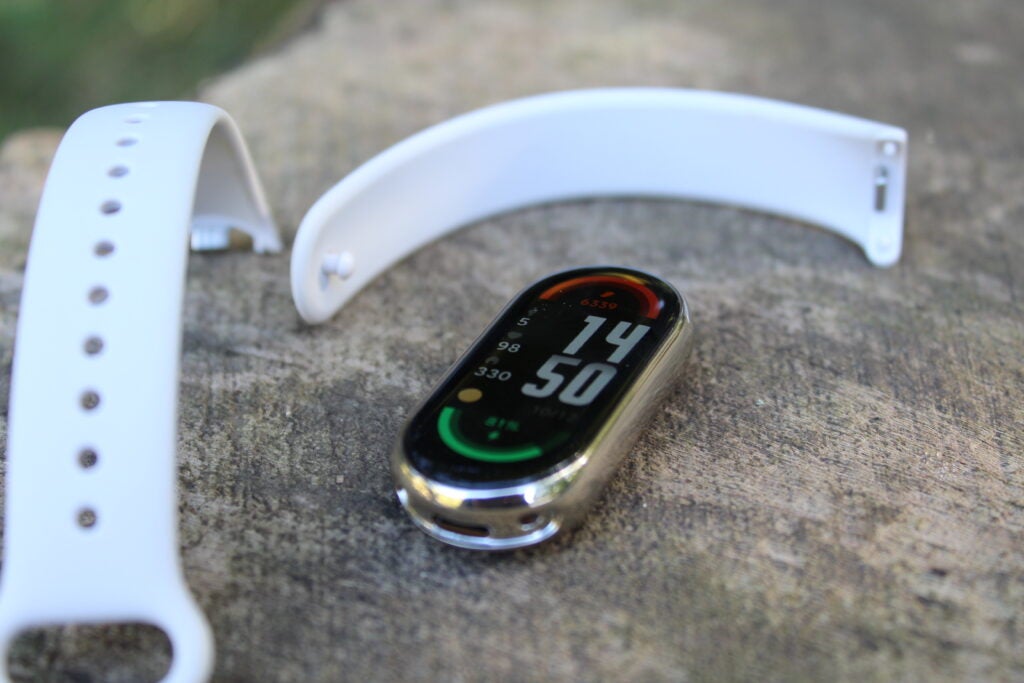
It may sound like a simple change – and it is, really – but it’s also one that really helps elevate the look here. You can now actually see that premium-looking metal case, rather than it being hidden behind a cheap, plastic all-in-one strap, and the pendant and running clip accessories mean that it’s now much better at handling life away from your wrist
There’s been no real compromises in order to achieve it, either. The dimensions of the case remain almost identical to the previous generation, with the Smart Band 8 simply being a bit longer and wider, while also shrinking from front to back.
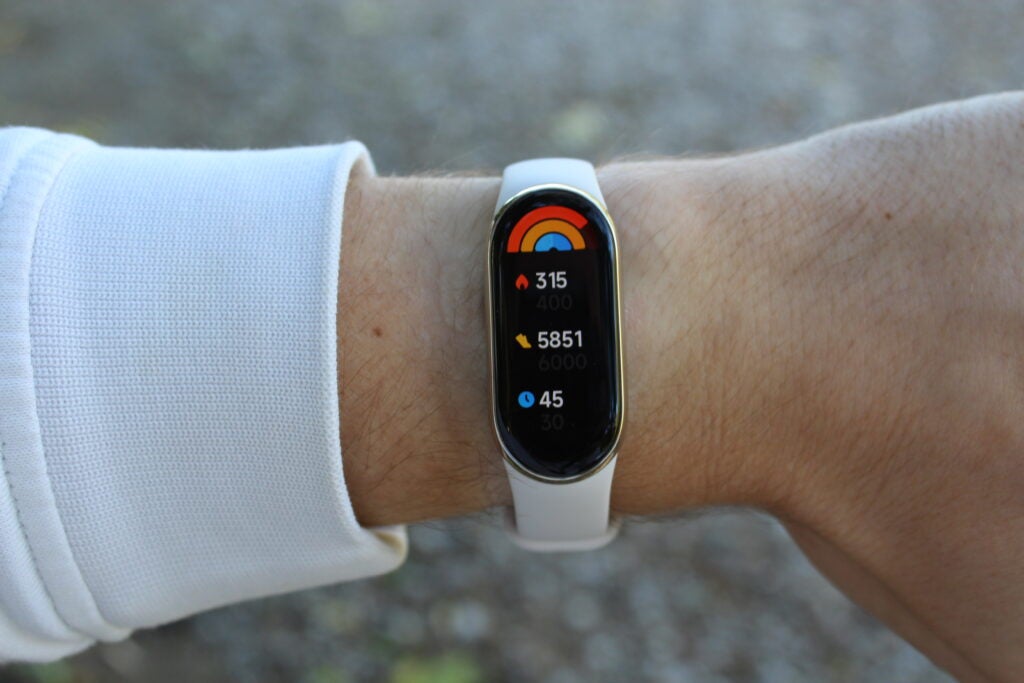
The display also disguises some major upgrades, despite being the same 1.62-inch size and pumping out the same 192 x 490 pixel resolution.
Not only is it now brighter – able to reach 600 nits of brightness, up from 500 nits – but the refresh rate has also been bumped from 30Hz to 60Hz.
This makes a world of difference when viewing notifications, swiping through glances, and navigating menus; it feels more akin to the responsive feedback you would expect from a modern AMOLED smartwatch, not a budget fitness tracker.
Features
- Missing out on numerous smart features
- Xiaomi OS feels smooth
- Paltry amount of storage
Traditionally, those craving smart features haven’t been well catered for with the Smart Band – and not much has changed on this front for the eighth edition.
The basics are all still here, though, and they are at least presented about as well as you can expect on a 1.62-inch display.
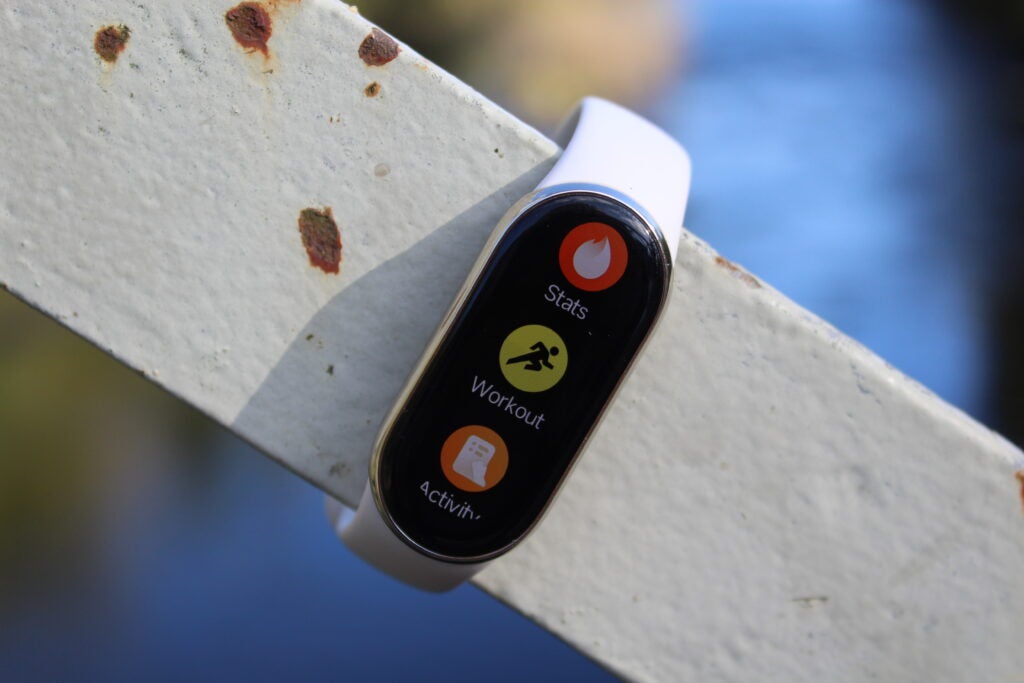
Weather forecasts, calendar events, and music control are all easily customisable through the Mi Fitness app – available on iOS and Android – and these widgets make interacting with the tracker very simple and intuitive.
It’s something that’s also massively aided by that improved refresh rate. Xiaomi’s proprietary OS feels very smooth here, and there’s very little on-screen text that bogs it down. Given that notifications can look pretty cramped even after you expand them, this is certainly for the best.
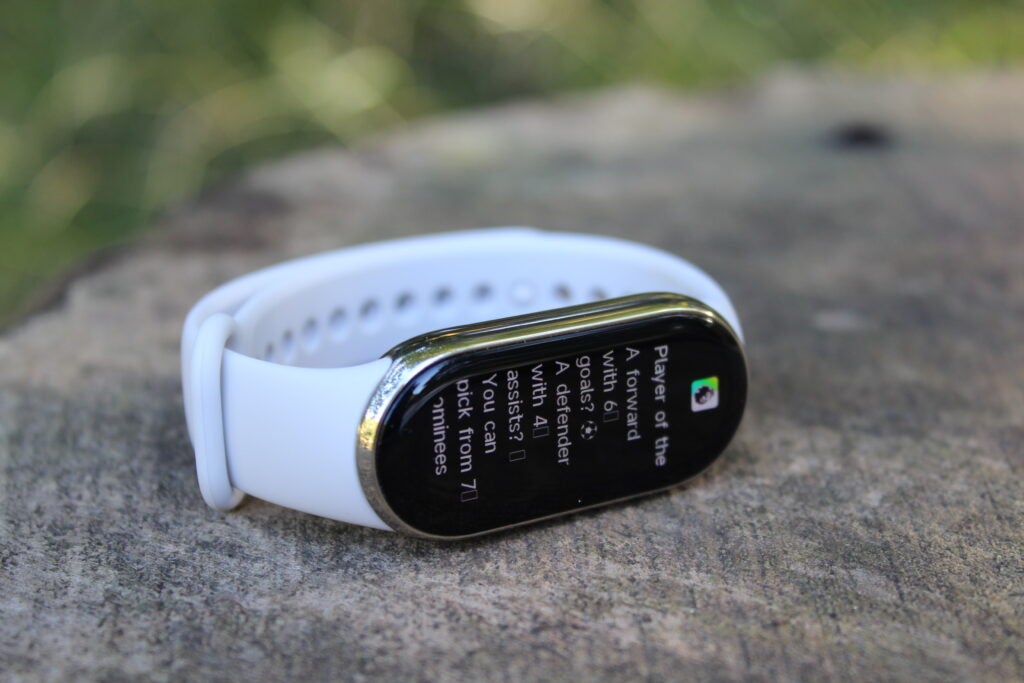
Those into their watch faces will also find a few neat options pre-loaded onto the device, but a paltry amount of storage means that you’ll very quickly fill up the device if you download any more.
The equation is still the same here, then. And it means anybody requiring support for a smart assistant, contactless payments, or third-party apps will have to look elsewhere, and almost definitely up their budget.
As ever, it’s still frustrating that the Chinese version of the device possesses support for things like contactless payments while the global edition misses out, but this shows no signs of being rectified any time soon.
Sports tracking
- Step counting and calories burning are unreliable
- Pebble Mode improves tracking experience
- Decent accuracy for heart tracking
The Xiaomi Smart Band 8 may be an entry-level device, but Xiaomi by no means shortchanges users with the amount of fitness tracking features. The only issue with this ambition, however, is that the data can often miss the mark.
My testing against premium devices like the Garmin Epix Pro (Gen 2), Whoop 4.0, and OuraRing (Gen 3) found that step counts are frequently drastically underreported, while calorie burn estimates are unreliable, too.
It’s a theme that continues into the more advanced areas of fitness tracking data, such as the training load, recovery time, and VO2 Max estimates – ones that take a fair bit of inspiration from Apple and Garmin in their presentation.
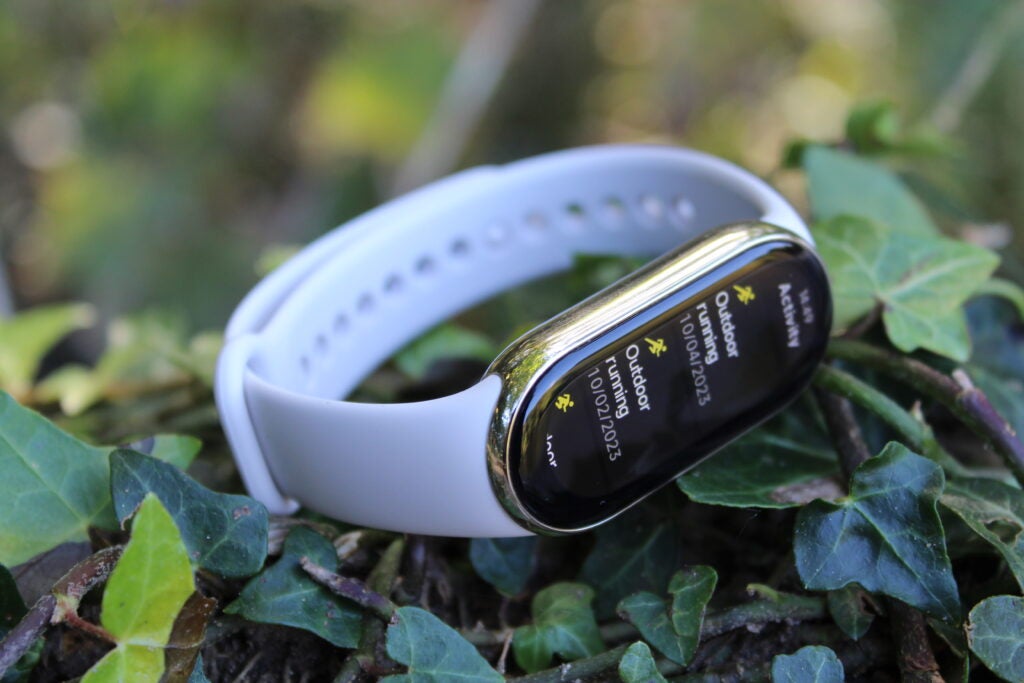
My training load for the week never managed to get above Xiaomi’s ‘Low’ rating, despite including around 30 miles of running, three hours in the gym, and five hours of tracked walking.
Meanwhile, one of my five-mile runs performed at a 154BPM average yielded a whopping recovery time of 63 hours, which, of course, would be taking recuperation to the extreme.
Thankfully, the activity tracking experience is propped up massively by the addition of Pebble Mode. With the simple addition of an attachment, sold separately by Xiaomi, and a switch over to the mode within Mi Fitness, you can turn the Smart Band 8 into a genuine running pod.
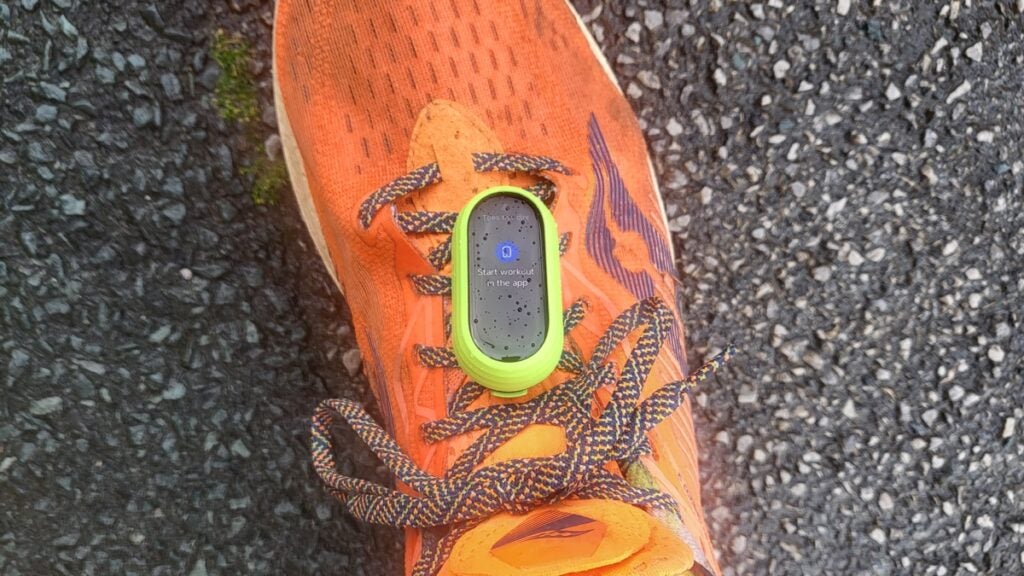
And unlike much of what’s tracked from the wrist, the data here is generally solid – at least when compared to something like Garmin’s wrist-based Running Dynamics.
The footstrike pattern is particularly useful, I found, showing you a breakdown of your landing points throughout the session.
I’d like to see this in a bit more detail, perhaps showing you when you deviated to a different strike, but it’s still handy for those who want a basic insight into their form.
Then there’s the harder data – things like ground contact time, flight time, flight ratio, and impact force – that you’ll have to read up on in order to really get the benefit from.
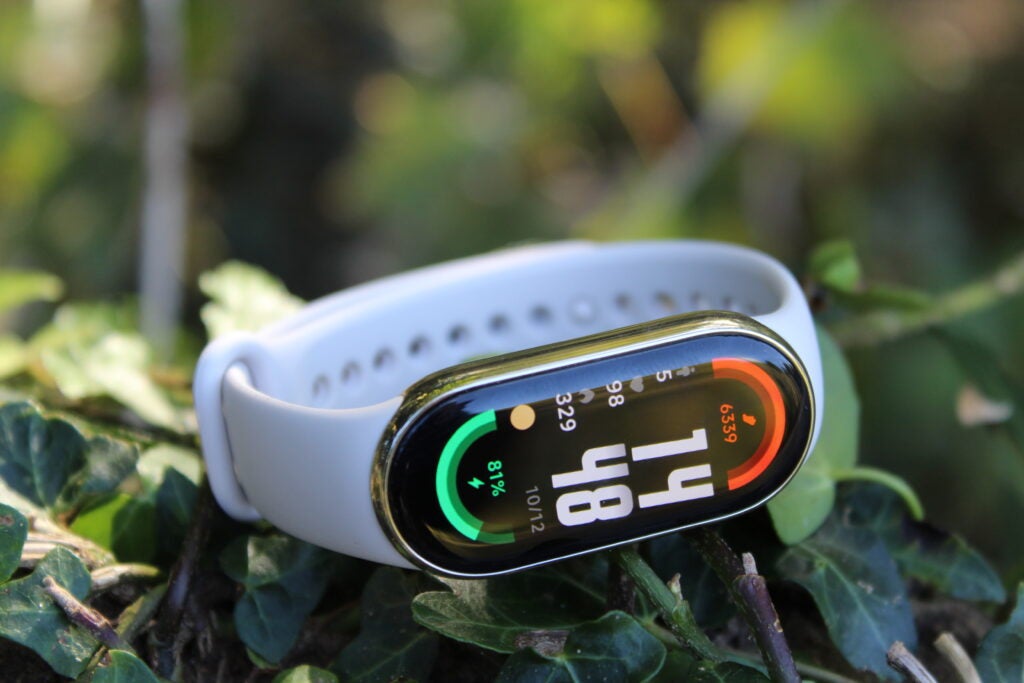
My only real problem with Pebble Mode is the fact that you’ll need to be connected to your phone throughout a workout, given that the device can’t operate locally and also doesn’t feature its own built-in GPS.
And, of course, you also don’t get any heart rate readings, which do thankfully prove to be within a decent margin of accuracy when tracking on the wrist.
Generally, I found that the Smart Band 8’s maximum BPM readings from a session were almost always in line with Whoop and Garmin, though it did consistently over-report the average reading from a session.
It’s certainly not data that you should rely on if you’re a serious or intermediate-level exerciser, but it’s definitely enough for those who just want a basic insight into their effort.
Health tracking
- Many features disabled by default
- Activating features will affect battery life
- Missing out on a number of features
While the Xiaomi Smart Band 8 is by no means a health-tracking phenomenon, it does have a couple of features up its sleeve for those content with the relative basics.
The core health features include things like blood oxygen saturation readings, resting heart-rate data, and high/low heart-rate notifications, though frustratingly, many of them are actually disabled by default.
Like me, once you realise that this data isn’t being synced through to the Mi Fitness app, you can go through the settings and flick all these things on (at the cost of some battery life), but it is a little odd to start with.
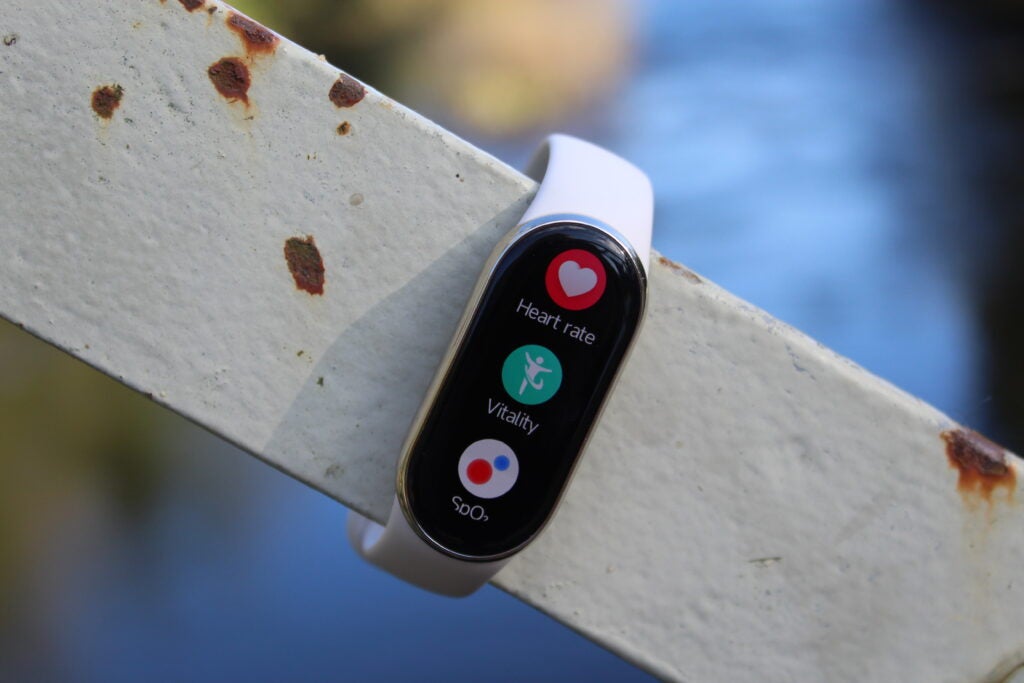
Thankfully, the data is at least in line with what you would expect. SpO2 readings remained within my expected range of 95-99% – as also tracked by our Oura and Garmin – while resting heart rate (taken from your lowest HR during an awake, inactive state) figures were also accurate.
There are obviously omissions here, such as respiration rate, skin temperature, heart-rate variability, and more, but I suspect it might be another couple of years before they arrive on a Smart Band device. For now, you’ll have to look at more premium trackers for richer health insights.
Sleep tracking
- Reliably tracks sleeping times
- Shallow level of insights
- Graded sleep quality
As with some of the health features discussed above, you’ll have to dive into the Mi Fitness app’s settings and enable ‘advanced monitoring’ if you want anything more than very basic sleep tracking on the Xiaomi Smart Band 8.
This does have an impact on battery life, but otherwise you’ll be left with your night’s sleep being divided into only ‘light’ or ‘deep’ sleep, with no room for REM or continuous heart-rate monitoring.
The good news here is that the Smart Band 8 is able to very reliably register falling asleep and waking up times, even with the more advanced settings turned off.
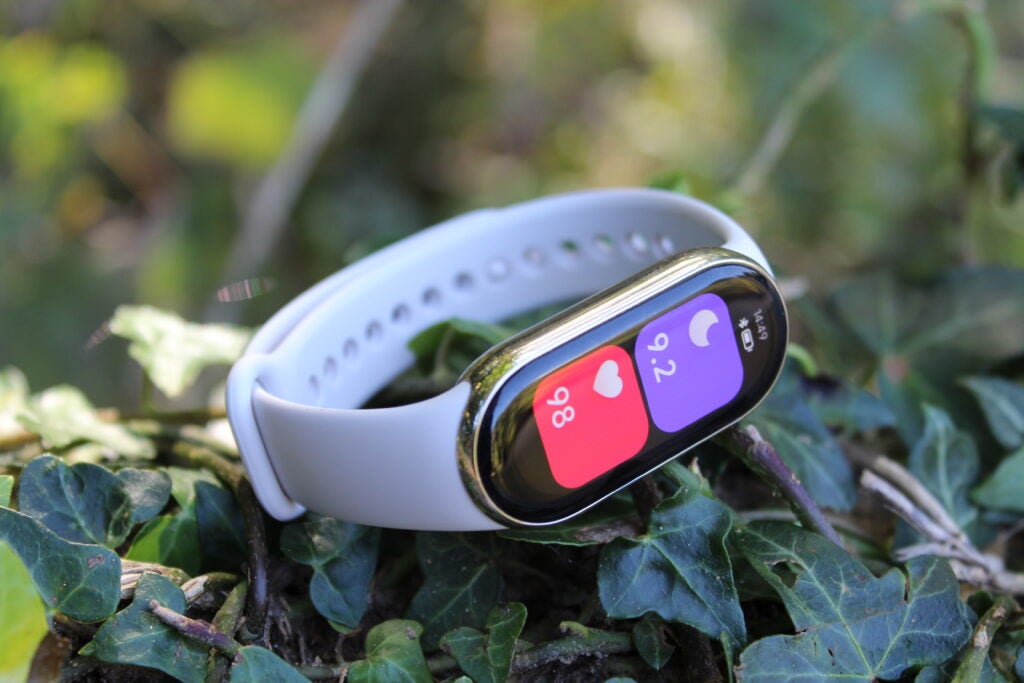
I found it was able to consistently match up with the likes of Oura and Garmin – two of the very best at tracking sleep – and sleep stage estimates were never concerningly out of sync with these other test devices.
The only thing that holds the Xiaomi Smart Band 8 from being an elite sleep tracker, really, is the level of insights it’s able to glean from this tracking.
There’s no effort to highlight your sleeping SpO2 average, and potentially valuable metrics like heart-rate variability are nowhere to be seen.
Added extras like sleep scores are also left out unless you turn on the more advanced monitoring, though Xiaomi does at least grade your sleep quality with marks like ‘Fair’ or ‘Good’ if you don’t.
Battery life
- Up to 16-day battery life
- Activating core features lowers battery to 5 days
With so many features disabled by default, the Xiaomi Smart Band 8’s battery life will fluctuate greatly depending on which of these you turn on.
In my initial testing, with default settings intact, the battery drain per day was around 5-7%, which does actually line up with Xiaomi’s 16-day estimate.
However, this does naturally begin to tumble if you enable the likes of the always-on display, SpO2 monitoring, or advanced sleep tracking.
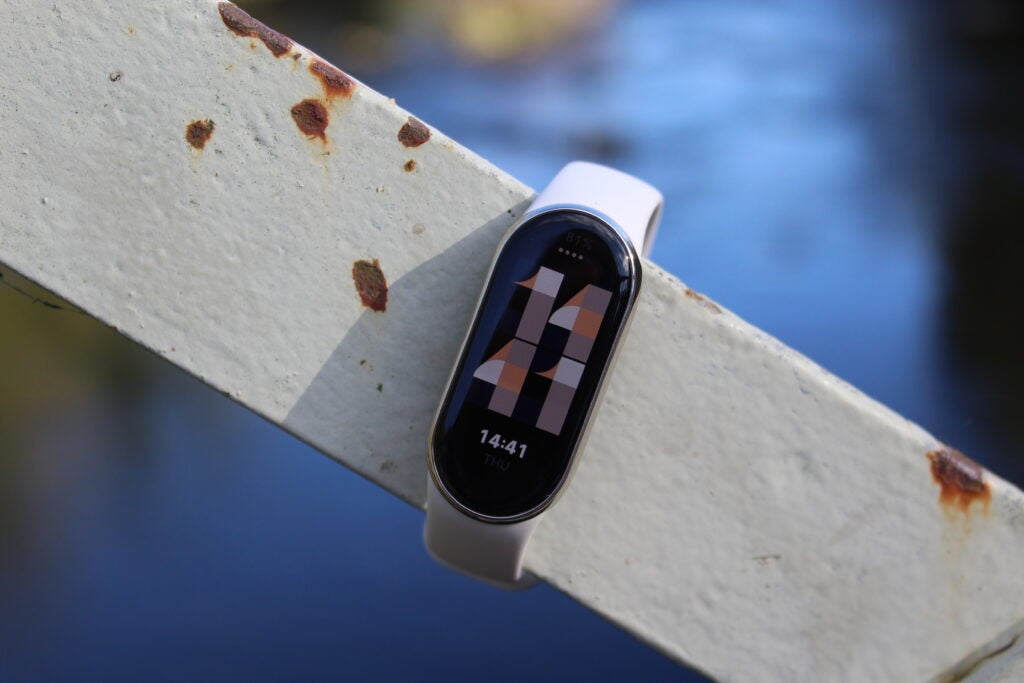
When I turned all of these on, the battery drain was closer to 20% per day, which equates to around five days of battery life. It’s not bad by any stretch, but it’s worth keeping in mind if you are planning on having the full package running most of the time.
Thankfully, activity tracking isn’t too much of a burden in this department. A Pebble Mode run will only see the battery drain around 5% per hour, with this stretching to around 5-10% if you track from the wrist.
And for those in need of instant juice, things are much improved over the previous generation. I was able to go from 10% to a full battery in just 45 minutes, which means you’re easily able to allay any anxiety about running flat.
Should you buy it?
You should buy it if you want a budget-friendly tracker
Among the very best cheap fitness trackers on the market, the Smart Band 8’s design is superb and it doesn’t skimp on features.
You shouldn’t buy it if you require top-tier accuracy
You can’t have it all at this price, and the accuracy of some fitness tracking features won’t be enough for more serious users. Check our Best Fitness Tracker guide for more options.
Final Thoughts
Despite typically being a lineup that only sees incremental changes, I think what Xiaomi has done with the Smart Band 8 offers genuine reasons to get excited.
Especially if you’re not keen on the look of older models – or you’re a runner who wants advanced insights without the price tag of a dedicated watch – this is a superb option to consider.
FAQs
No, the Xiaomi Smart Band 8 does not have built-in GPS.
The Xiaomi Smart Band 8 is priced at £39.99 on the official website.
















